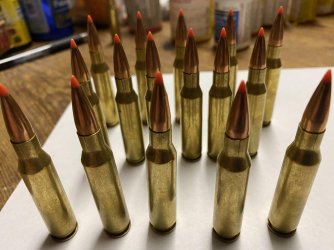Bullhunter20
New Member
I have recently bought a Remington 700 sps chambered in 300 RUM that I would like to mainly use for hunting. Along with the rifle, I got 100 rounds of new R&P brass and about 50 rounds of several times fired R&P brass. On initial inspection I found several of the fired brass had split necks. I believe this brass to be fired 3-4 times, but do not know for sure. I usually tumble and sonic clean the brass after sizing to get sizing case lube residue off the cases and to have a nice clean and polished case before reloading, which upon further close inspection, I found more hairline splits in several more of the fired cases, that I could not see on initial inspection. My question: Is it okay to anneal this brass "after" sizing? I know I should have annealed right away after finding initial split necks, but I'm no expert and I never thought of it until doing some research.....after I resized. I would like to extend the life of the brass, knowing it is very work hardened, although the consensus on LRH is to anneal "before" sizing, not after. I have never annealed before, and plan on using the drill socket, torch, towel cool method. I know neck tension could be an issue, but I believe brass life is more of an issue considering availability and price of such brass. Thoughts? All input is welcome, and thanks in advance!
Last edited:

